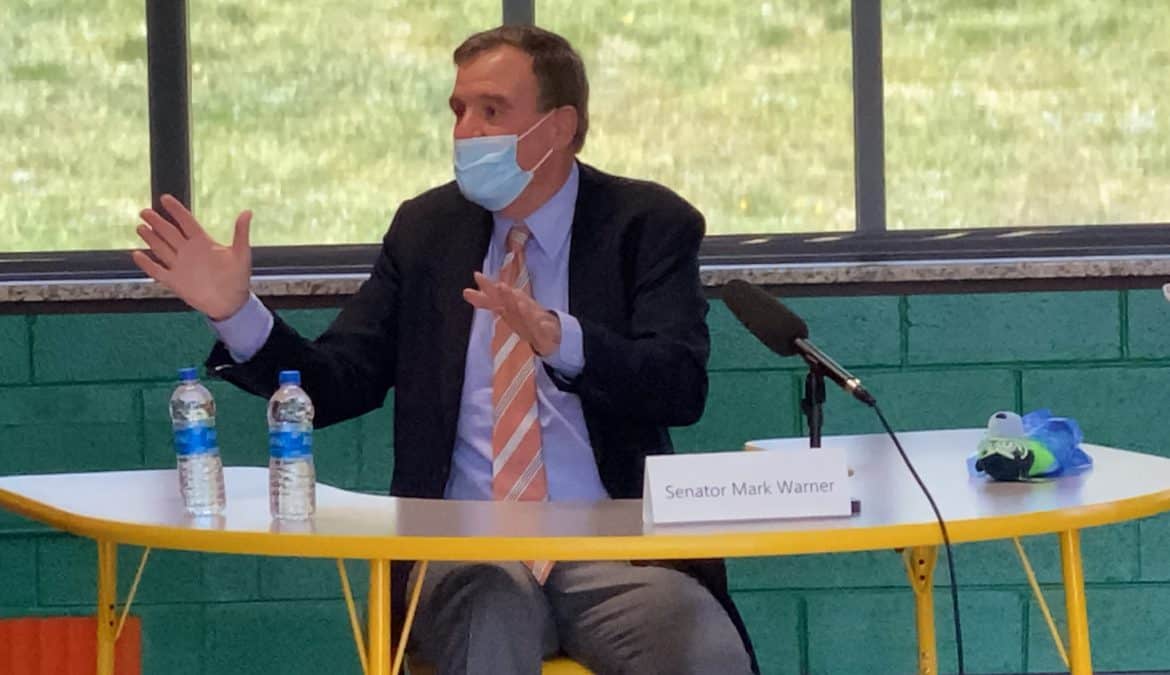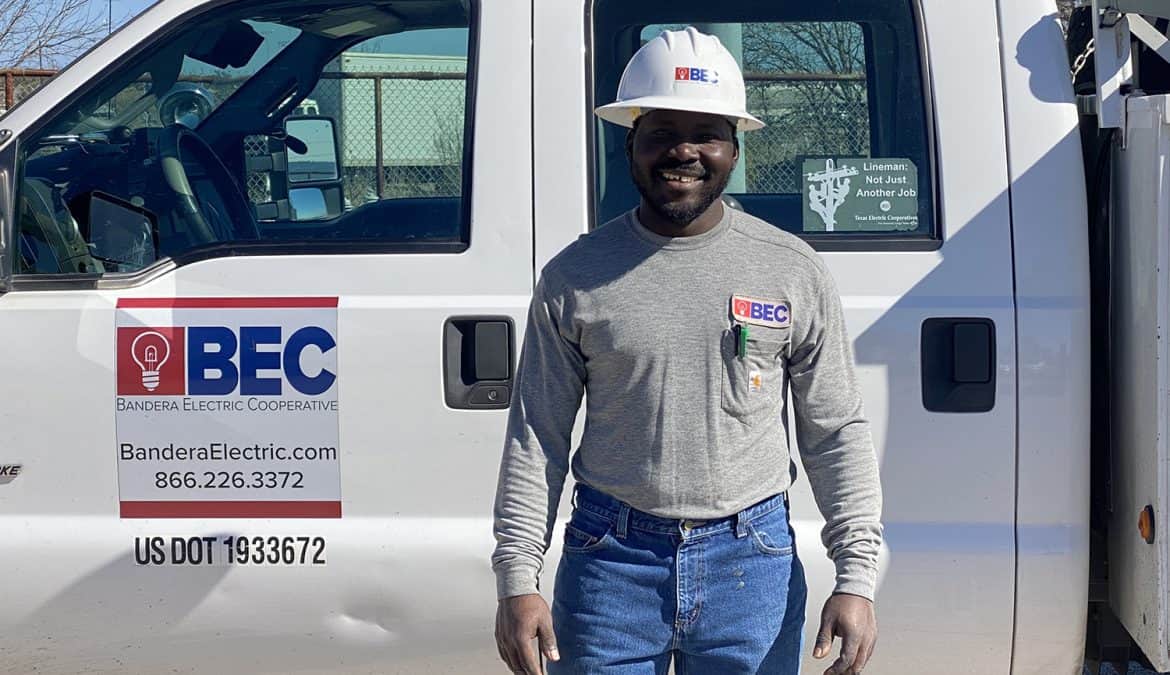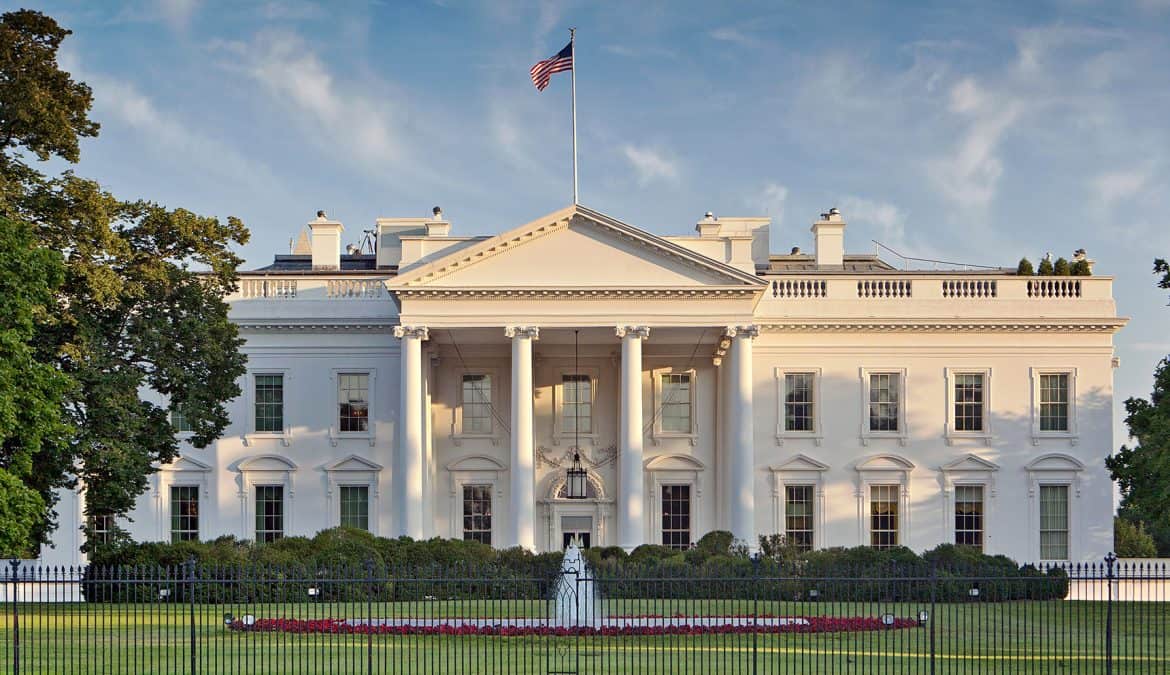When electricity came to Cahess, Haiti, in 2013, Gimps Louis-Charles bought a DVD player and invited 40 people to his home to watch movies.
“It was a happy moment for me and everyone in my community,” said Louis-Charles, 31, a contract groundworker for NRECA International at the time.
While that “flip the switch” moment marked the start of progress and promise in his hometown, it also set off a series of events for Louis-Charles that rivals any movie ending.
Today, Louis-Charles has a new life in the United States, where he’s a lineman-second class at Bandera Electric Cooperative and lives near its Bandera, Texas, headquarters with his wife, Marotine, and two stepchildren.
Louis-Charles’ connection to BEC began in 2015 when he met volunteer lineworkers John Hernandez, Jay Raspberry and Garrett Clark during an NRECA International job to extend lines to an orphanage in Caracol. The job was grueling, especially for the Americans accustomed to power tools and trucks. But not for Louis-Charles.
“He was willing to work and do whatever it took to complete the job,” said Hernandez, who’s now Louis-Charles’ foreman at BEC. “He never backed off anything, and he was always wanting to learn, always asking questions. It’s a job that very few of us can do, and he had it.”
The four men became fast friends. “I always try to ask people where they work, and one of the things they kept saying was how their company values them and how it’s a great place to work,” said Louis-Charles, who had wanted to move to the U.S. “That was the place I wanted to be and the team I wanted to join.”
In late 2015, Hernandez heard from Louis-Charles’ supervisor in Caracol. Louis-Charles was in Louisiana and was looking for a job in the industry.
Hernandez found donors to help pay the $4,000 in immigration attorney fees to obtain a work visa for Louis-Charles, a six-month process. Later, he helped the family settle into their new home by loaning Louis-Charles money for a car and a deposit on a rental home.
“I’ve been in a similar situation where someone helped me,” said Hernandez. “I wanted to bless Gimps like I was blessed.”
Louis-Charles landed the lineworker apprentice job in 2017, but the journey to Texas wasn’t easy. His wife had close family in Louisiana, and the family had to endure a 15-hour bus trip to Texas.
“When I moved here, I didn’t know the next thing,” said Louis-Charles, who has since repaid Hernandez. “I didn’t have a place, or even money to get a place. When we arrived, we found the house ready with beds and food. All I had to do was bring my family.”
BEC is also paying Louis-Charles’ tuition at Northwest Lineman College. Classes are on hold because of the pandemic, but Louis-Charles is attending other trainings.
“He’s a great, hardworking guy who’s given employees a perspective on how some people’s lives are harder,” said Bill Hetherington, the co-op’s CEO. “His story proves through hard work and resilience and effort, you can be successful.”
As Louis-Charles waits for linework school to resume in full, he’s working to relocate his two children from a previous marriage who are still in Haiti. He loves the camaraderie at the co-op and the small-town friendliness. “I have a great relationship with the managers and my coworkers, and it is a good place to work. I’m honored to be part of that team.”
Victoria A. Rocha is a staff writer at NRECA.






